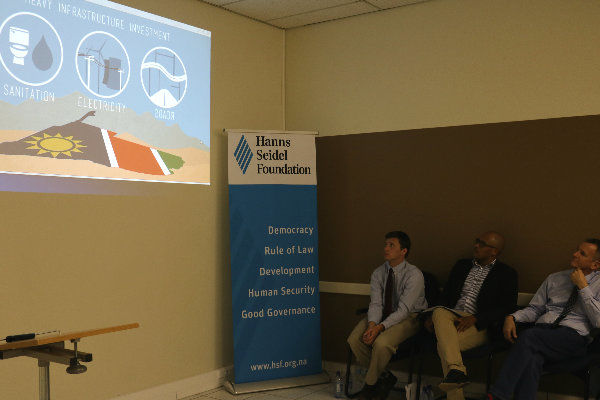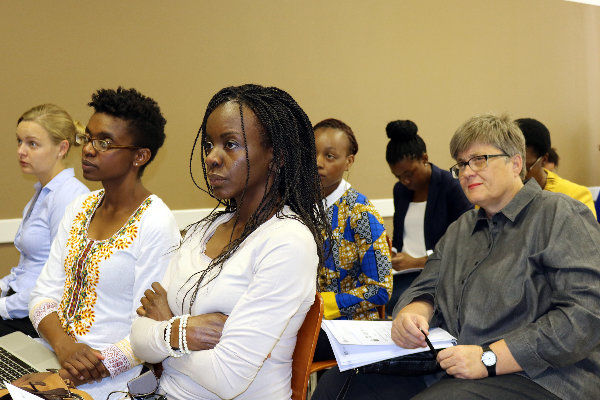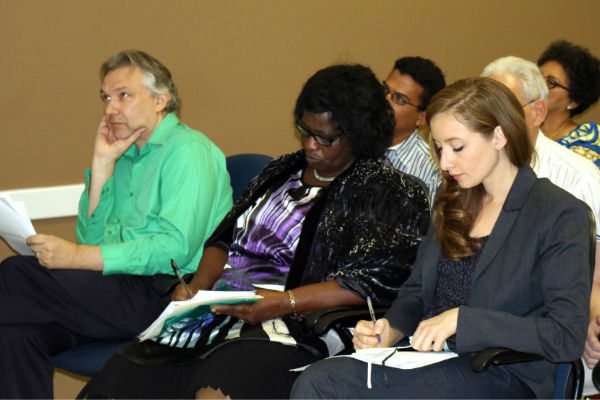Achieving Namibia's Vision 2030
A game of trade-offs

Presentation
According to the ISS research Namibia is not on track to meet many of the targets set out in either the latest National Development Plan (NDP4) or Vision 2030, the long term Namibian development strategy. Using the International Futures (IFs) forecasting system, the research first modelled a plausible long-term population forecast for Namibia and then explored various interventions on how best to overcome key constraints on Namibia's development.
ISS researcher and author of the paper, Mr Steve Hedden, provided insights on the background of the selected targets from Vision 2030 and then compared the IFs Current Path forecast with the targets set out in the NDP. His findings are that Namibia is not on track to meet economic growth targets, targets on income per capita, infant mortality targets, or sanitation targets. “We expect near universal access to water by 2030 but sanitation seriously lags behind. Namibia lags in access to improved sanitation facilities, particularly for the rural population,” he stated. Currently, access to improved sanitation facilities is about 33%, which is comparable to levels in Nigeria and India. Given the GDP per capita in Namibia, access to improved sanitation should be more than 70% (comparable to Albania). Namibia has made “little to no progress” in achieving the MDG of halving the population without access to improved sanitation, let alone the Vision 2030 target of universal access.

The audience
Mr. Hedden presented three scenarios to chart Namibia’s potential progress. Under the Current Path scenario, the economy continues to grow, but many targets remain out of reach. The Infrastructure Access scenario maps a future where Namibia invests heavily in infrastructure development, but this translates into less investment in other vital sectors as funds are diverted towards the building of roads, provision of sanitation and electricity. Finally, the Leave No Namibian Out scenario is a future where slightly lower investments are made in infrastructure as well as education and development more broadly. This scenario sees overall increases in human development and economic growth, along with a slight reduction in inequality by 2030. The Leave No Namibian Out scenario sees a slight reduction in inequality by 2030, due to the provision of social grants to the poorest Namibians," he concluded.
Mr Hedden noted that that deep-seated structural challenges will remain even under the Leave No Namibian Out scenario.

Graham Hopwood, Hon. Aino Kapewangolo & Nicole Bogott
In his response to the paper, Mr Graham Hopwood, Director of Institute for Public Policy Research (IPPR) pointed out that the paper and presentation came on the eve of the presentation by Finance Minister Hon. Calle Schlettwein’s of the country’s mid-year review and that hard choices have to be made. He hoped that the Government would strip out waste, spending on luxury items, unnecessary high-level positions and white elephant projects.
According to Mr. Hopwood, it is possible to reach many of the 2030 goals, but Namibians need to be more honest about its successes and failures. “Poverty is deep seated - and there is a need for further research, but we don't seem to be in that mode.” Namibia will not eradicate poverty by 2025 nor by 2030 according to the various scenarios presented in the research paper. Poverty levels and inequality as measured by the Gini coefficient will remain high – a source of serious concern.
Turning vision into reality: Namibia's long-term development outlook
Using the International Futures (IFs) forecasting system, this paper first presents a plausible long-term population forecast for Namibia. This forecast is then used to assess key targets from the National Development Plan (NDP4) and Vision 2030, Namibia’s long-term development strategy.
